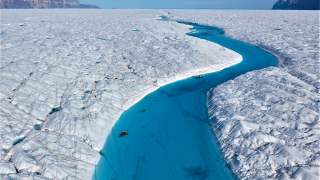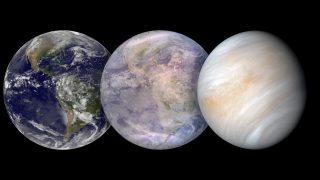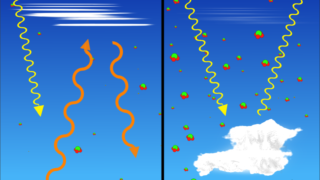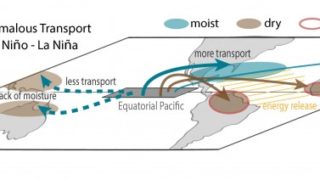
Meltwater is hydro-fracking Greenland’s ice sheet
meltwater Author: Alun Hubbard, Professor of Glaciology, Arctic Five Chair, University of Tromsø I’m striding along the steep bank of a raging white-water torrent, and even though the canyon is only about the width of a highway, the river’s flow is greater than that of London’s Thames. The deafening roar and rumble of the cascading […]








